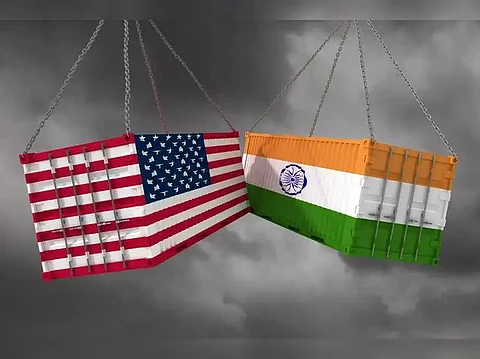

In view of US duties on Indian jewellery going up steeply by 25%–32%, the Gem and Jewellery Export Promotion Council (GJEPC) has said the industry needs to examine overseas manufacturing bases and supply chain adjustments, and also explore trade-rule exemptions, in order to face the tariff onslaught.
The high tariffs threaten India’s dominance in the US diamond jewellery market. The duty shock has already slowed shipments to the US, bringing them to a near standstill, and putting 60%-70% of the trade at risk.
Taking into account the seriousness of the situation, GJEPC invited the media to a meeting held on Friday, August 9, to discuss the fallout of the steep tariffs. At the meet, industry stakeholders discussed legal provisions, operational adjustments, and longer-term manufacturing strategies to protect their business.
The high tariff on Indian exports is likely to benefit competitors such as Thailand, Vietnam, and Israel, which could capture the market share held by Indian jewellers. India currently accounts for 42% of the US market in polished diamonds (over 50 points), making the loss of even a portion of this share significant.
The situation is grim -- in FY 2024–25, overall gem and jewellery exports declined by 5%, with polished diamond exports plunging 52% in April–June 2025, compared to the same period last year. While gold jewellery exports rose in value — largely due to higher gold prices — it has done little to compensate for the sharp decline in diamond-led exports.
GJEPC said industry leaders should review possible relief under existing US trade provisions. Chapter 9802 could allow duties to be levied only on the value added abroad for goods incorporating US-origin components, while the “substantial transformation” rule could help reclassify the origin of products based on where the most significant processing occurs.
Lab-grown diamond exporters may benefit from a limited exemption — if seeds are entirely of US-origin, and backed by proper documentation, the portion of value derived from these seeds could be excluded from duty calculations.
Shipping wax and rubber moulds without special permissions, or having US entities send castings to India for stone setting before re-import is a possible way out for the industry. At the meeting, rerouting shipments through countries with lower tariff rates was also considered as a near-term measure. In this context, establishing manufacturing bases in the UAE is emerging as a viable longer-term strategy, offering both proximity to key markets and potential duty advantages.
GJEPC also urged the Government of India to provide relief to the gems and jewellery export sector, and step in with policy relief, seek duty drawback extensions, and provide support for market diversification.
